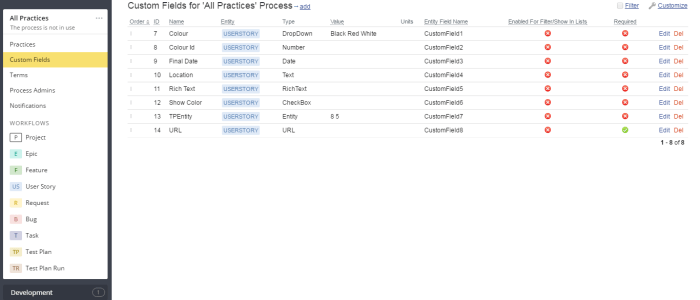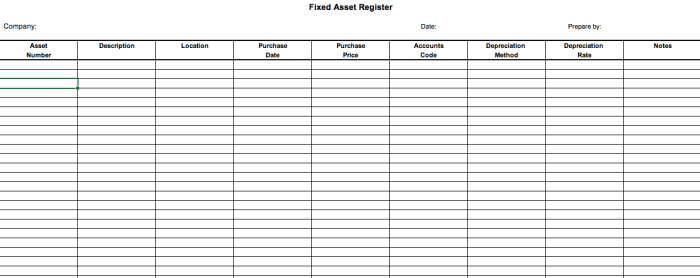Import all of the fields from the assets worksheet – In the realm of data management, the process of importing all fields from an assets worksheet into a database or other system holds immense significance. This comprehensive guide delves into the intricacies of this process, providing a detailed overview of the data structure, import techniques, validation strategies, and best practices involved in ensuring accurate and efficient data transfer.
Field Data Structure
The assets worksheet contains a structured data format, ensuring consistent and organized data storage. Each field in the worksheet has a specific name, data type, and constraints to maintain data integrity.
The following table provides a detailed breakdown of the field structure:
| Field Name | Data Type | Constraints |
|---|---|---|
| Asset ID | Integer | Unique identifier for each asset |
| Asset Name | String | Descriptive name of the asset |
| Asset Type | String | Category of the asset (e.g., equipment, software) |
| Manufacturer | String | Company that produced the asset |
| Model | String | Specific model of the asset |
| Serial Number | String | Unique identifier for the specific unit of the asset |
| Acquisition Date | Date | Date when the asset was acquired |
| Cost | Decimal | Purchase price of the asset |
| Location | String | Physical location of the asset |
| Status | String | Current operational status of the asset (e.g., active, inactive) |
| Notes | String | Additional information or comments about the asset |
Data Import Process

Importing all fields from the assets worksheet into a database or other system involves a structured process that ensures data accuracy and integrity.
The data import process typically includes the following steps:
- Data Extraction:Extracting the data from the assets worksheet using appropriate tools or methods.
- Data Transformation:Converting the data into a format compatible with the target system, including data cleansing and validation.
- Data Loading:Inserting the transformed data into the target system, ensuring data integrity and consistency.
Potential challenges during the import process include:
- Data inconsistencies or errors in the source worksheet
- Compatibility issues between the source and target systems
- Performance bottlenecks during data extraction or loading
Solutions to these challenges may involve:
- Manual data validation and correction before import
- Custom data transformation scripts to handle specific data formats
- Optimization techniques to improve import performance
Data Validation

After importing the data, it is crucial to perform data validation to ensure its accuracy and consistency. This involves verifying that the data meets specific criteria and rules.
Data validation checks may include:
| Field | Validation Check |
|---|---|
| Asset ID | Must be unique and non-zero |
| Asset Name | Must not be empty |
| Asset Type | Must match a predefined list of values |
| Manufacturer | Must not be empty |
| Model | Must not be empty |
| Serial Number | Must be unique and non-empty |
| Acquisition Date | Must be a valid date |
| Cost | Must be non-negative |
| Location | Must match a predefined list of values |
| Status | Must match a predefined list of values |
| Notes | Must not exceed a maximum length |
Data Utilization: Import All Of The Fields From The Assets Worksheet

The imported data from the assets worksheet can be leveraged for various business purposes, including:
- Asset Management:Tracking and managing the lifecycle of assets, including maintenance, repairs, and replacements.
- Financial Management:Calculating depreciation, insurance premiums, and other financial metrics related to assets.
- Risk Management:Identifying and mitigating risks associated with assets, such as safety hazards or environmental compliance.
- Strategic Planning:Making informed decisions about asset acquisition, disposal, and utilization based on data analysis.
- Data Analytics:Performing advanced data analysis to uncover trends, patterns, and insights related to asset performance and utilization.
Best Practices

To ensure successful data imports from the assets worksheet, it is important to follow best practices, including:
- Data Validation:Always perform thorough data validation before importing to ensure data accuracy and consistency.
- Incremental Imports:Import data in smaller batches to minimize the impact on system performance and reduce the risk of errors.
- Data Transformation:Use appropriate data transformation techniques to convert the data into a format compatible with the target system.
- Performance Optimization:Optimize import processes to minimize processing time and avoid system bottlenecks.
- Data Security:Ensure that the data import process is secure and complies with data protection regulations.
Essential FAQs
What are the key challenges in importing data from an assets worksheet?
Potential challenges include data inconsistencies, missing values, data type conversions, and ensuring data integrity during the import process.
How can data validation ensure the accuracy of imported data?
Data validation involves establishing rules and criteria to check for data accuracy, completeness, and consistency. This helps identify and correct errors, ensuring the reliability of the imported data.
What are some best practices for optimizing data imports?
Best practices include using appropriate data formats, optimizing data extraction methods, handling large data volumes efficiently, and implementing data security measures to protect sensitive information.